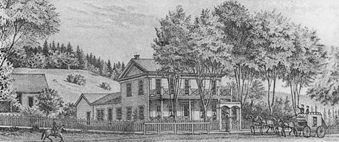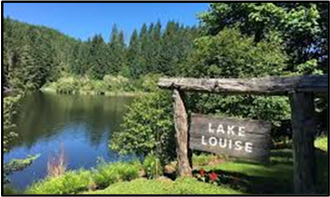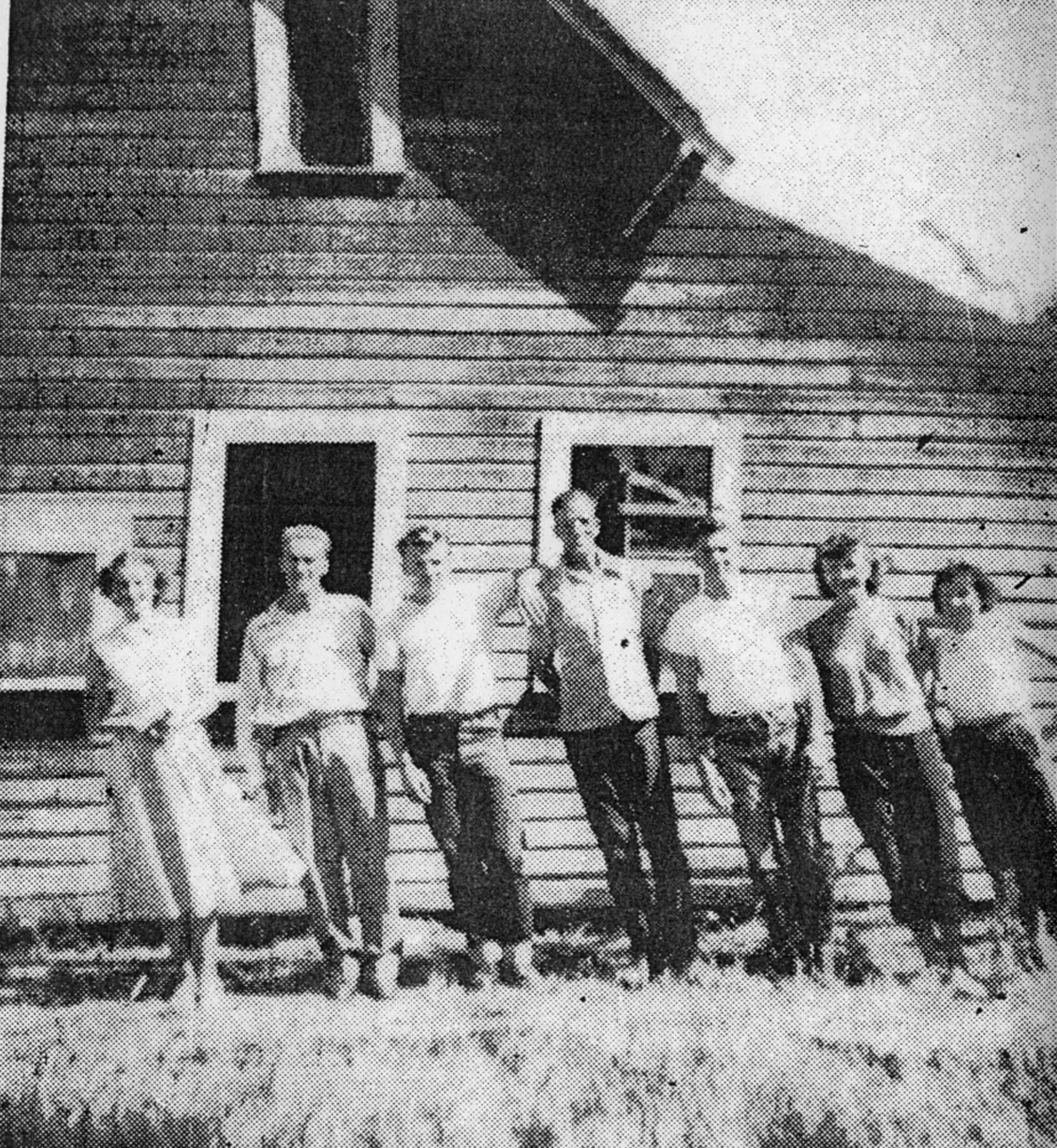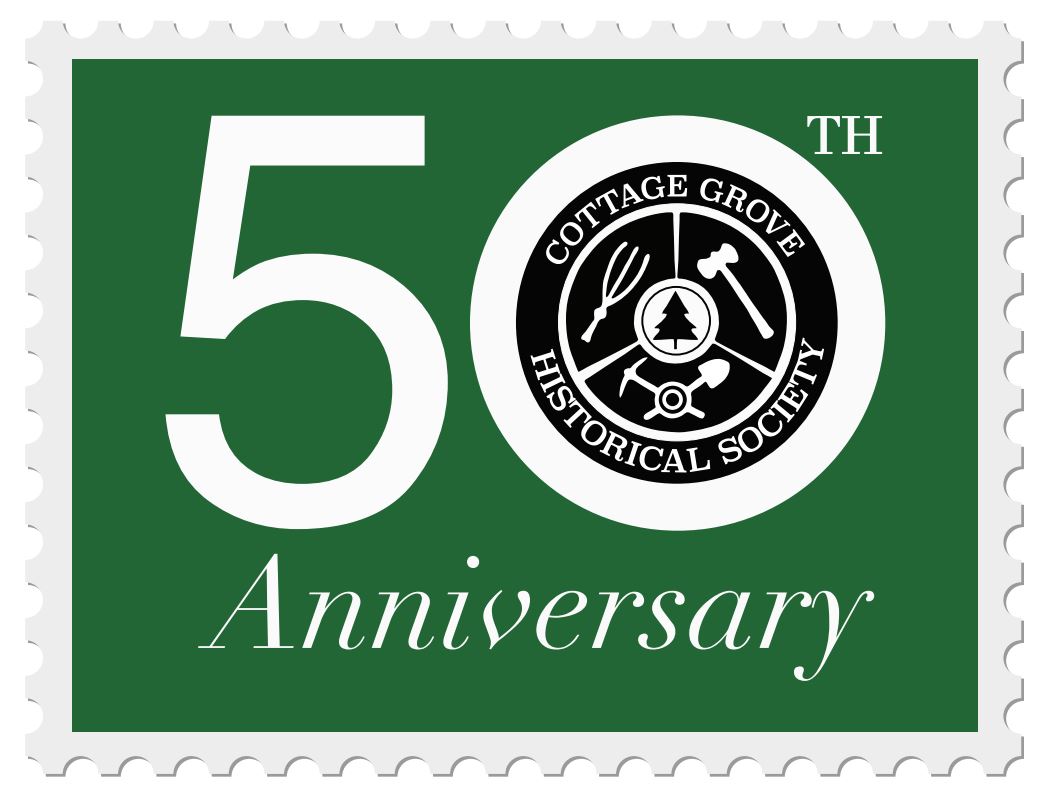
While the community was named Lorane in 1888, the valley had long been an important stop on the road. The earliest white settler recorded in the area was William Martin who arrived in 1850 followed shortly by Phileatus F. Davis and family. The location, however, was already part of a well-established route known as the Hudson’s Bay Trappers’ Trail. The route from Fort Vancouver to Fort Umpqua, near Elkton, ran right through the Siuslaw Valley. The trail was probably much older, likely established by Native tribes of the area. It was a common practice of the Hudson’s Bay Co. to utilize Indian routes as they established trade with various tribes.
Much of the Fur Trappers’ route would later be used as part of the Applegate trail, also known as the Southern Route of the Oregon Trail. The Applegate Trail ran at times through Cottage Grove and other times though Lorane, likely depending on the water levels when travelers passed through the area. This trail was established in 1846, four years before any settlers laid claim to lands in what would become Lorane.
 The first stagecoach stop in the area was established in 1853, the Cartwright House, indicating that the route was already an established stage line. In 1857 Philip Sheridan mapped and designated Territorial Road formalizing the route in the eyes of the Oregon Territorial Government.
The first stagecoach stop in the area was established in 1853, the Cartwright House, indicating that the route was already an established stage line. In 1857 Philip Sheridan mapped and designated Territorial Road formalizing the route in the eyes of the Oregon Territorial Government.
The Oregon and California Stage Co., Stagecoach service began operating on Sept 15, 1860. This stage line was a 710-mile route between Portland and Sacramento operating until 1887, when the railroad that connected the two locations was complete. The company utilized already established stagecoach routes through the Willamette and Siuslaw Valleys. An article in the Jan 19, 1876 Albany Evening Democrat shows the routes were not always easy for travelers. “On the 15th inst., the rates of fare on the routes of the Oregon and California Stage Co. were raised to 15 cents per mile. We suppose the advance is caused by bad roads. The more passengers have to walk and harder they work to pry the vehicles of the company out of the mud, the more they are charged for the privilege.”
Travel decreased in the 1870’s as railroad lines to more locations were completed. Faster, smoother, and more economical, rail travel quickly became the travel option of choice. The main rail line would be routed through Cottage Grove, taking Lorane off the travel route for many. The area, however, would continue to thrive, and Territorial Road/Highway remains an active travel corridor.
Creating Community
The earliest settlers arriving in the area were farmers who found the soil rich and productive. The first business on record was the Cartwright Stage Stop and Hotel. The Cartwrights traveled west in 1849 in search of gold in the fields of California. They made their way to the Siuslaw Valley in 1853. Darius B. Cartwright began building the hotel in 1853. While it took five year to complete, the stage stop was operational almost immediately. Once completed the hotel included a post office, telegraph station, and bar. The telegraph was installed in 1865 with one of the first incoming telegraphs being the announcement of President Lincoln’s assassination. The message was relayed to Cottage Grove by horseback as Cottage Grove did not have a telegraph line installed until 1881. The Cartwright house was once billed as “the finest holster between Portland and San Francisco”.
Cartwright sold it to his daughter Catharine and son in law William Russell who rebranded the hotel Mountain House. Darius stayed on as postmaster until his death on July 29, 1875. The hotel ceased operating after the railroad changed travel routes. The building then functioned as a farmhouse, remaining in the same family until 1902 when it was sold to the Addison family. In 1952 it was sold to the Thompson family who tore down the deteriorating building in 1973.
The Cartwright School was the first school in the area, opening in 1854 on land donated by its namesake. Henry Clay Houston was the first teacher. The building also served as a church in its early days. In 1892 a two-story schoolhouse was built with the second story serving as a community hall.
The Siuslaw Valley Grange was established in 1873 with 30 charter members and Mr. Cartwright as master. Other early social groups included the Cornet Band started in 1883 and the IOOF (International Order of Odd Fellows) lodge which opened in 1884.
In 1888 the first postmistress, Mrs. William Crowe established the name Lorane. Prior to this the post office was in the Cartwright house and named for that location. With this the community had an official registered name that remains to this day.
The Lorane Church was erected in 1899, with additions include a kitchen, social hall and classrooms added in the 1950’s. The Church also served as a high school from 1913 to 1920.
Other early industries included agriculture and lumber. Jost D. Petrie opened first sawmill and grist mill in the valley in early 1880s. Lumber continued to be an important industry in the area, but agriculture would remain king in the valley. Dairy farms spawned a cheese factory in the area for a short time in the early 1900’s and orchards produced highly regarded fruit until many were cut down during WWII when grain became a sought-after product. In 1919 records show that most of the produce processed at the Cottage Grove Cannery was brought in from Lorane. The best of the fruits were individually wrapped and shipped fresh. 
After timber died down and traditional agriculture began to wane, a new crop arrived in the valley. While fruit and agriculture had long traditions in the area wine making and the accompanying grape fields began to take hold in the Willamette Valley starting in the mid 1960’s. In 1979 Hinman Vineyards started the first winery in the area. Chateau Lorane began commercial operations in 1992 becoming the first winery in Lorane. King Estates opened a few years later becoming the largest operation in the area. Lake Louise, a manmade lake and part of Chateau Lorane, was the film location for an episode of Murder She Wrote. The episode, titled A Lady in the Lake, aired in Nov of 1985. The rich soil that once nurtured fruit orchards now grow acres of grapes that produce world class wines.
Lorane for many is a simple stop on the road to somewhere else but take a minute and you will find a thriving community rich in history. Indians, fur trappers, stagecoach travelers, loggers, farmers, and now wine enthusiasts, have made Lorane more than just a stop on the road.
| The Lorane Vortex | |
 |
Mr. & Mrs. Lloyd Peterson bought a Lorane area farm in 1940 and soon noticed some strange things about an old rickety side building. After some exploration they described a number of anomalies:
They had found a vortex on their property. |
| At one point the Peterson’s attempted to make the location a tourist attraction much like the House of Mystery at Gold Hill, naming the attraction The House of Marvels. They even added a hamburger stand and gift shop. The remote location of the attraction created a lot of work for very little return, so the attraction eventually closed. The building on the site was severely damaged in a snowstorm one year and completely torn down. | |
